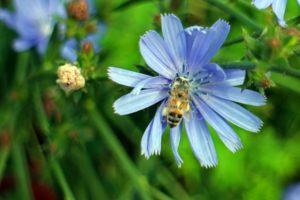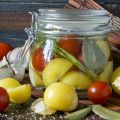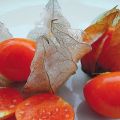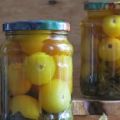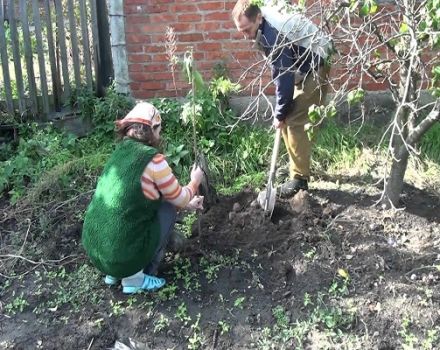How to grow and care for physalis in a greenhouse, plant description and tips
Physalis has gained popularity among gardeners, due to the difference in tastes, decorative fruits and an abundance of useful properties. In the open ground in our country, it can only grow in the southern regions, but it is possible to grow physalis in a greenhouse in the central regions; with proper care, the plant gives a good harvest.
Description and features of the plant
Physalis is a southern perennial plant of the Solanaceae family, its largest representative. He settled in Russian cuisine relatively recently, but has already acquired loyal admirers. The fruits are used for preparations for the winter, they are pickled, salted, added to jars with tomatoes and cucumbers. Jam is made from berry varieties, marmalade is prepared and used to decorate confectionery.
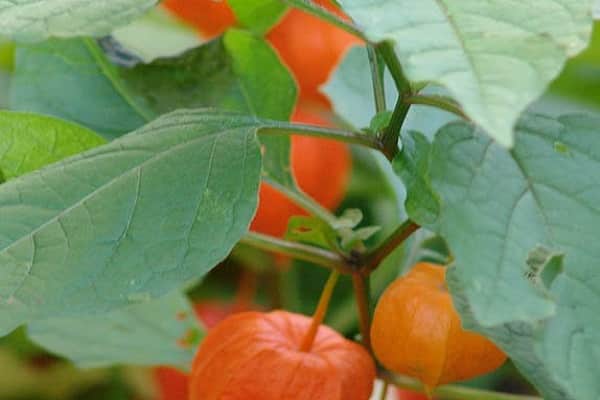
Important: before eating, the fruits must be blanched to get rid of the bitter taste
Depending on the variety, the stem length is from 20 to 120 centimeters, oval, opposite leaves up to 15 centimeters long, expand towards the base. The large fruit is placed in a box shaped like a Chinese lantern. As the fruit ripens, the orange capsule loses color and dries up.
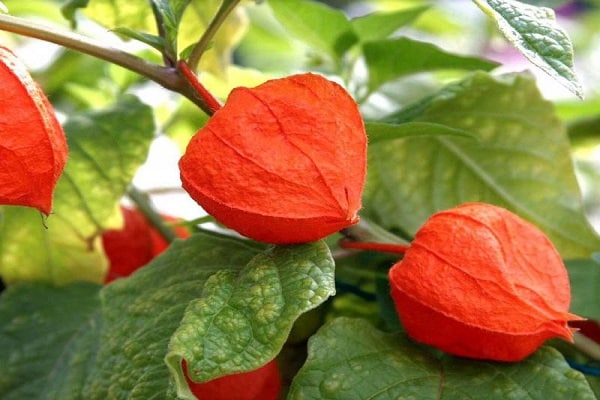
There are decorative, vegetable, berry varieties. Ornamental varieties are not edible, but serve as an excellent decoration for garden plots.
Physalis vegetable resembles a tomato. Depending on the variety, the weight of the fruit is from 20 to 150 grams.
Berry, characterized by small fruits with a pronounced taste, berries from 1 to 10 grams. From one bush, you can get from 2 to 5 kilograms of fruit. Most popular varieties:
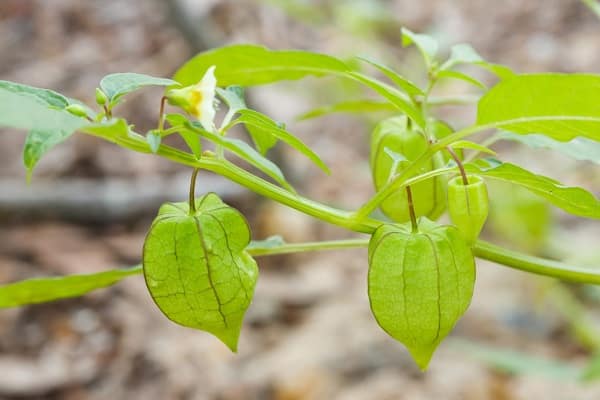
- Vegetable:
- Kinglet;
- Moscow early;
- Large-fruited;
- Gribovsky.
Physalis vegetable is also called Mexican, since Mexico is its homeland.
- Berry:
- Strawberry;
- Pineapple;
- Sugar raisins;
- Peruvian.
Berry varieties are difficult to grow in the Middle Lane, they need more heat and light than vegetable varieties.
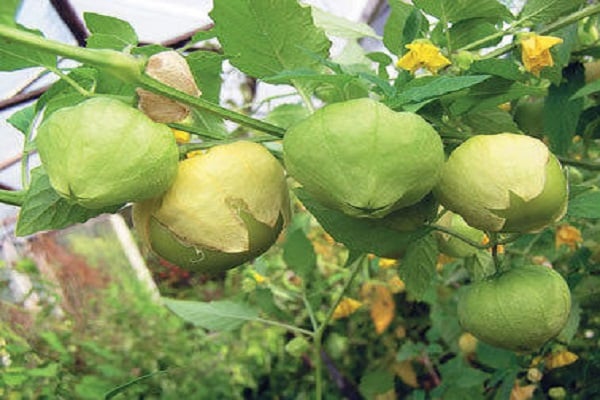
How to plant physalis correctly
Physalis can be planted in a greenhouse in 2 ways: seedlings and cuttings.
Seeds for seedlings are pre-soaked for 30 minutes in a solution of potassium permanganate. The time for planting seeds for seedlings is February-March. After that, the seeds are sown in the soil, which is pre-steamed and, covered with film or glass, placed in a warm, sunny place. The temperature should be kept around +19 ° C. Plants under the film need to loosen the soil.

Physalis is poured with warm water, preventing the soil from drying out or waterlogging. The landing is regularly aired. After the emergence of shoots, the boxes are opened, when 3 leaves appear, they dive.It is better to use peat pots for picking as an additional fertilizer. After the appearance of 6-8 leaves, the seedlings are transferred to the greenhouse. Low-growing varieties are planted at the rate of 6-8 plants per 1 square meter. For tall varieties, 2 plants per square meter are sufficient.
Physalis cuttings can be planted by cutting off the tops of the shoots. A stalk with 3 internodes in half is placed in the ground. They do it in July.
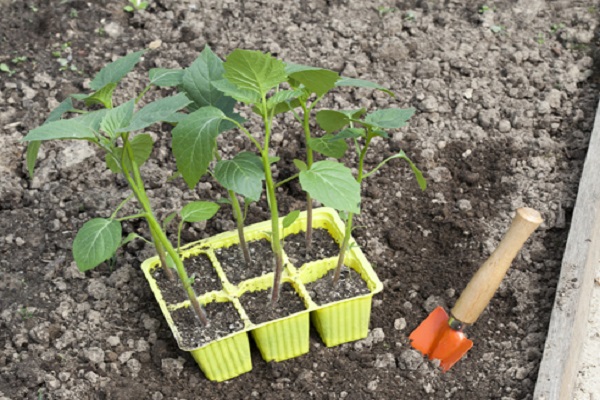
Features of growing in a greenhouse
This is a very unpretentious plant. The abundance of warmth and light guarantees a good harvest. The soil for it should be neutral or slightly alkaline, loose and light. Low-growing varieties are planted at the rate of 6-8 plants per 1 square meter. For tall varieties, 2 plants per square meter are sufficient.
It must be systematically weeded, loosened and watered once a week. High grades must be tied up. The greenhouse must be regularly ventilated. In regions where there is little sun, grow berries physalis varieties difficult, however, even the gardeners of the Leningrad region grow excellent yields of vegetable varieties.
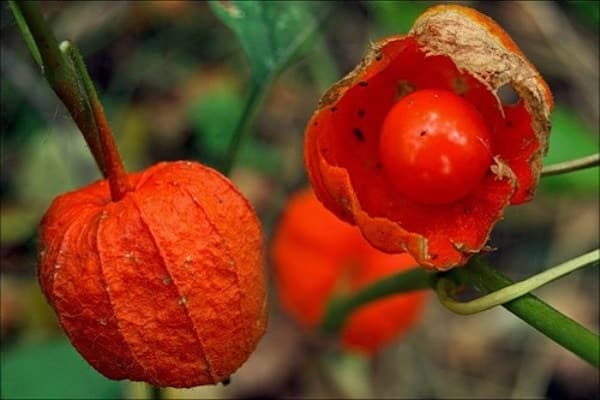
Care Tips
The plant does not tolerate weeds, regular weeding and maintenance will allow you to get a good harvest. Landings are great complex fertilizer for tomatoesto be used in accordance with the manufacturer's recommendations. Physalis does not like manure, it is better to use compost instead; the plant reacts well to feeding with a solution of wood ash.
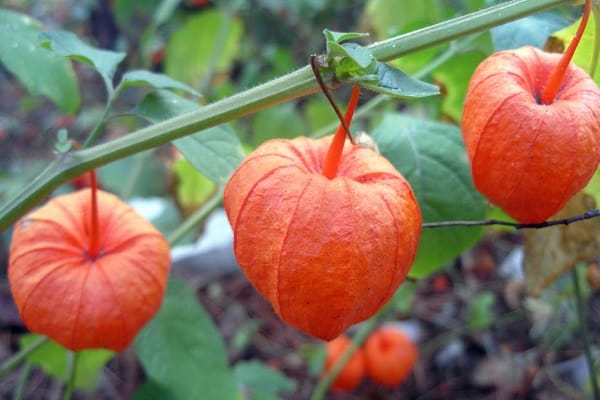
As the physalis ripens, the boxes dry out and fall off. Dry and fallen boxes are collected. The fruits in them are kept high-quality and tasty, the main thing is to harvest before the first frost.

